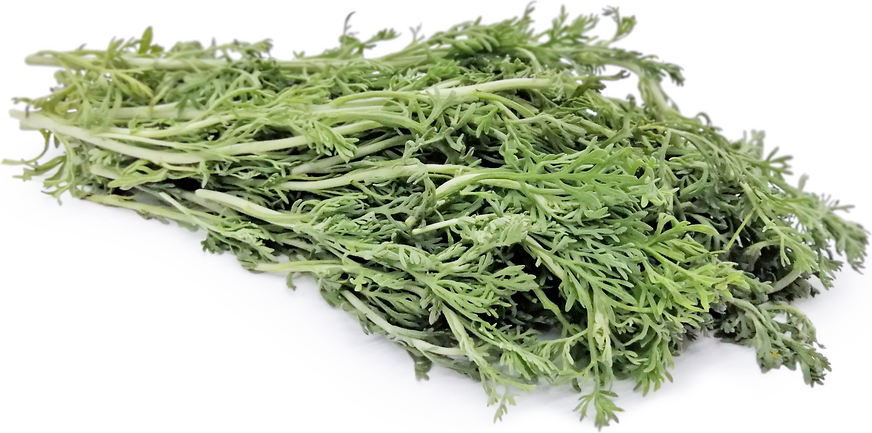


Davana Leaves
Estimated Inventory, lb : 0
Description/Taste
Davana is small to medium in size and is an erect, herbaceous plant that can grow up to 40-60 centimeters in height. The leaves are deeply lobed with many small leaflets and are green with a blue, silver-grey dusting, growing in an alternate pattern. The leaves are delicate and feathery, and the plant also bears fragrant yellow flowers. Davana is aromatic with an herbaceous, fruity, and slightly woody scent with sweet notes of vanilla.
Seasons/Availability
Davana is available year-round, with peak season in the spring.
Current Facts
Davana, botanically classified as Artemisia pallens, is an annual herbaceous plant that is a member of the Asteraceae family along with sunflowers and daisies. Also known as Marikolunthu and Davanam, Davana is native to southern India was initially grown in home gardens to make bouquets and garlands for religious offerings. Recently the plant has been cultivated on a larger scale for its fragrant leaves and flowers which are now used to make Davana oil. This oil is sweet, warm, fruity, and is favored for use in fine fragrances as the oil will transform and smell differently on each person, creating a custom fragrance. Davana oil is also used to flavor beverages such as cola, foods such as cakes and pastries, and tobacco products.
Nutritional Value
Davana contains compounds that have anti-inflammatory and anti-microbial effects. It may also help to lower blood glucose levels.
Applications
Davana is primarily harvested to make an essential oil, which is used in fragrances and as a food flavoring. The oil can be diffused in the air, diluted and applied topically to the skin, or blended in small amounts to flavor baked goods and beverages. The scent of Davana oil compliments frankincense, vanilla, mandarin, and rose.
Ethnic/Cultural Info
In India, Davana is considered to be holy to the Hindu deity Shiva, the god of transformation. The flowers and leaves are commonly weaved into garlands, bouquets, and wreaths and placed on alters in temples in southern India as daily offerings. Davana is also used in traditional Ayurvedic medicine to help reduce symptoms associated with wounds, intestinal worms, and diabetes, and also has antiviral properties.
Geography/History
Davana is native to and predominately cultivated in southern India in the states of Karnataka, Tamil Nadu, Andrapradesh, and Maharashtra. The exact origins of Davana are unknown, but it was first recorded in the 1800s and is believed to have been grown since ancient times. Davana can be found fresh at local markets in India, but it is also found processed into oil since the oils increase in popularity in the 1960s. Today, the majority of Davana cultivation occurs in India, but small amounts of Davana are also cultivated in the United States and Europe.




